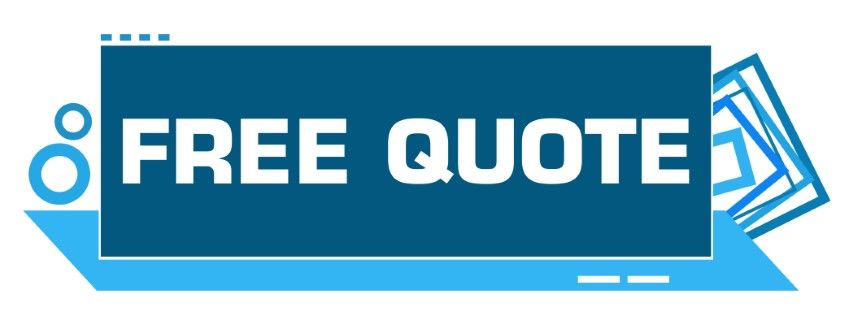CALL US NOW: (555) 555-5555
Personal Line of Credit (PLOC)
in Tucson AZ
Escape the Debt Trap: Consolidate and Reclaim Your Financial Peace!
Take the first step towards financial freedom →
Tucson Debt Consolidation
A Personal Line of Credit (PLOC) is a flexible financial tool offered by banks and credit unions, allowing individuals to borrow up to a predetermined limit as needed. Unlike traditional loans with fixed amounts and set repayment schedules, a PLOC provides you with a revolving credit line. This means you can withdraw funds, repay them, and then borrow again, making it a versatile option for managing cash flow and unexpected expenses.
Managing a Personal Line of Credit
Effectively managing a PLOC involves understanding your borrowing limits and repayment obligations. It’s crucial to use the credit line judiciously, borrowing only what you need and ensuring timely repayments to avoid high interest charges and potential damage to your credit score. Regularly monitoring your balance and staying within your credit limit will help maintain financial health and avoid unnecessary fees.
Common Mistakes to Avoid
One common mistake is treating a PLOC like a credit card, leading to excessive borrowing and accumulating debt. Another pitfall is missing payments, which can result in late fees and impact your credit score. Additionally, failing to track your spending and borrowing habits can lead to unexpected financial strain. Being mindful of these issues will help you utilize your PLOC more effectively and avoid pitfalls.
Eligibility Criteria
Eligibility for a PLOC generally depends on several factors, including your credit score, income level, and overall financial health. Lenders assess these criteria to determine your creditworthiness and the amount you’re eligible to borrow. A higher credit score and stable income increase your chances of obtaining a favorable line of credit.
Documentation Needed
When applying for a PLOC, you’ll need to provide documentation such as proof of income, employment verification, and identification. Lenders may also require information about your assets and liabilities to assess your financial stability. Having these documents ready can streamline the application process and improve your chances of approval.

We will get back to you as soon as possible.
Please try again later.
Steps to Apply
Applying for a PLOC involves a few straightforward steps. First, gather the necessary documentation and determine your creditworthiness. Next, choose a lender and complete the application form, providing accurate information about your financial situation. After submission, the lender will review your application and, if approved, provide you with a credit limit and terms.
How a PLOC Differs from Other Forms of Credit
A PLOC differs from other credit forms, like personal loans or credit cards, in its structure and usage. Unlike a personal loan, which provides a lump sum with fixed repayment terms, a PLOC offers a revolving line of credit that you can draw from and repay repeatedly. Unlike credit cards, which often come with higher interest rates and fees, a PLOC usually offers lower rates and more flexible repayment options.
If you’re interested in exploring how a
Personal Line of Credit in Tucson, AZ can benefit you, or if you have any questions about our services, please don’t hesitate to contact us. Our team is here to assist you in finding the right credit solution for your needs and ensuring a smooth application process.
Types of Personal Lines of Credit
Personal lines of credit are flexible financial tools that allow individuals to borrow money up to a specified limit. Unlike traditional loans, where you receive a lump sum, a personal line of credit provides a revolving balance that you can draw from as needed. Here are the main types of personal lines of credit:
Unsecured Personal Line of Credit
An unsecured personal line of credit does not require collateral. This means that the lender does not have any assets to claim if you fail to repay the borrowed amount. Approval is based largely on your creditworthiness, including your credit score, income, and financial history. Because there’s no collateral involved, interest rates on unsecured lines of credit can be higher than those for secured lines.
Secured Personal Line of Credit
A secured personal line of credit requires collateral, such as a savings account, certificate of deposit, or other assets. This reduces the lender’s risk, often resulting in lower interest rates compared to unsecured lines. If you fail to make payments, the lender can claim the collateral to recover the outstanding balance. Secured lines are typically easier to obtain for individuals with lower credit scores.
Home Equity Line of Credit (HELOC)
A Home Equity Line of Credit (HELOC) is a type of secured personal line of credit where your home serves as collateral. It allows you to borrow against the equity in your home, usually up to a certain percentage of its value. HELOCs often offer lower interest rates due to the secured nature of the loan. They are commonly used for major expenses like home renovations, debt consolidation, or significant life events. The interest may be variable, changing with market conditions.
Credit Card Lines
Credit cards are a form of personal line of credit that can be used for everyday purchases. They offer a revolving credit limit, meaning you can carry a balance from month to month while paying interest on the outstanding amount. Credit card lines often come with rewards and benefits but can have higher interest rates compared to other types of credit lines. They are convenient for short-term borrowing and managing daily expenses.
Overdraft Line of Credit
An overdraft line of credit is linked to a checking account and provides a buffer when you have insufficient funds. If you attempt to withdraw more money than is available in your account, the overdraft line covers the difference, preventing bounced checks or declined transactions. Interest rates for overdraft lines are generally higher, and fees may apply if you regularly use this feature.

Each type of personal line of credit has its own advantages and considerations. Choosing the right one depends on your financial needs, credit history, and ability to manage debt responsibly. Understanding the features and costs associated with each type can help you make an informed decision and use credit wisely.
Frequent Mistakes to Watch Out for in PLOC
When managing personal lines of credit, avoiding common pitfalls can save you from financial strain and improve your credit health. Here’s a look at some frequent mistakes and how to steer clear of them:
Ignoring the Terms and Conditions
One major mistake is not thoroughly reading or understanding the terms and conditions of your credit line. Each credit agreement comes with specific details about interest rates, fees, and repayment schedules. Overlooking these details can lead to unexpected costs and penalties. Always review the fine print before accepting any credit offer to ensure you know what you’re agreeing to.
Failing to Monitor Your Spending
Another common error is neglecting to keep track of your spending on your credit line. It’s easy to lose sight of how much you're charging when you’re not closely monitoring your transactions. Regularly reviewing your statements or using budgeting tools can help you stay within your means and avoid overspending.
Making Only Minimum Payments
Only paying the minimum amount due is a frequent mistake that can lead to long-term debt accumulation. Minimum payments often cover just the interest and a small portion of the principal, meaning the balance can linger for a long time. Aim to pay more than the minimum whenever possible to reduce your balance faster and minimize interest charges.
Using Credit Lines for Non-Essential Purchases
Relying on credit lines for non-essential or impulse purchases can quickly lead to financial trouble. It’s best to reserve credit for necessary expenses or emergencies. For everyday purchases, using cash or a debit card can help you avoid accumulating unnecessary debt.
Overlooking Credit Utilization Ratios
Credit utilization, or the ratio of your credit balance to your credit limit, plays a crucial role in your credit score. Utilizing a high percentage of your available credit can negatively impact your credit score. Aim to keep your credit utilization below 30% to maintain a healthy credit profile.
Missing Payments
Missing payments is a significant mistake that can harm your credit score and incur late fees. Set up reminders or automatic payments to ensure you never miss a due date. Consistent, timely payments help build a positive credit history and avoid unnecessary financial penalties.
Not Reviewing Your Credit Report Regularly
Failing to review your credit report can lead to overlooking errors or fraudulent activities. Regularly checking your credit report helps you spot inaccuracies and take corrective action. Many credit bureaus offer free annual reports, so make use of these to stay informed about your credit status.
Not Understanding the Impact on Your Credit Score
Many people don’t realize how their credit line usage affects their credit score. High balances and late payments can significantly impact your score, making it harder to obtain credit in the future. Educate yourself about the factors that influence your credit score and manage your credit lines accordingly.
By avoiding these common mistakes, you can manage your personal lines of credit more effectively, protect your credit score, and maintain better financial health.

LET'S CONNECT!
Our goal is to help you manage and reduce your debt more effectively. By consolidating multiple debts into a single loan, we simplify your payments and potentially lower your interest rates. Our experienced team works closely with you to understand your unique financial situation and tailor a consolidation plan that meets your needs. Whether you are dealing with credit card debt, personal loans, or other financial obligations, we are here to provide support and solutions. Contact us today to learn more about how we can assist you.